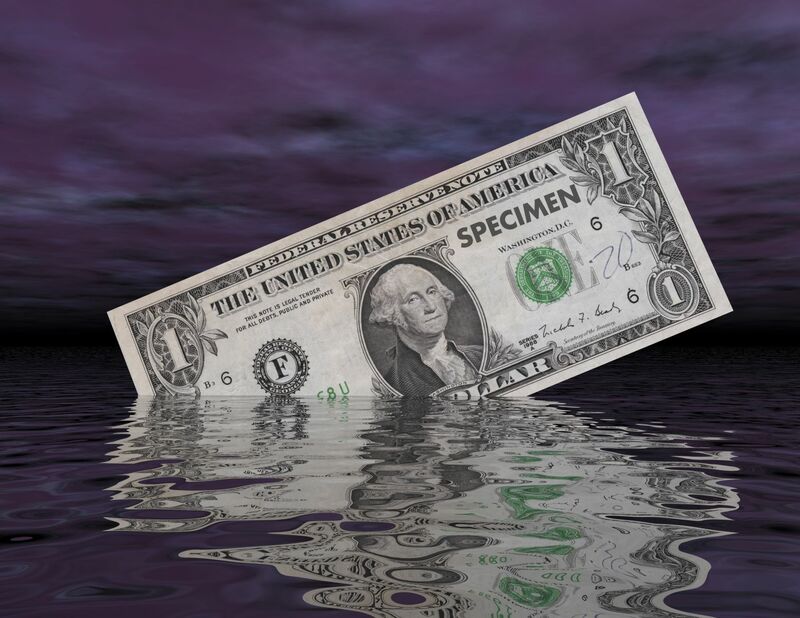
The U.S. dollar remains the leading worldwide reserve currency in late 2023. The dollar index measures the U.S. currency against a basket of other reserve foreign exchange instruments, including the euro, British pound, Japanese yen, Canadian dollar, Swedish krona, and Swiss franc. Before the dollar took the leadership role, the British pound was the world’s top currency. Today, the euro is the second-leading reserve currency, and the dollar index has a 57.6% exposure to the European foreign exchange instrument.
In an October 11, 2023, Barchart article on the dollar index, I mistakenly wrote:
Expect high price variance in the dollar index over the coming weeks and months as the forex market reflects the economic and geopolitical landscapes that are highly volatile in October 2023.
The nearby December dollar index futures contract was at the 105-106 level on October 11. On December 18, it was lower at around 102.55.
The dollar index ($DXY) slips as the Fed pivots
Former Fed Chairman Alan Greenspan once said the U.S. Federal Reserve’s FOMC was most effective when the market could not agree on its next monetary policy move. Surprises were Greenspan’s favorite and most effective tools for guiding the U.S. economy toward price stability and maximum employment, the central bank’s mandate.
The Fed left the short-term Fed Funds Rate unchanged at the December 13 FOMC meeting. However, the surprise was the shift in tone and forecasts for cutting interest rates in 2024. The statement and Chairman Powell’s press conference had a significantly dovish tone. Stock, bond, and commodity markets roared after the Fed’s Greenspan-esque surprise.

The chart highlights the dollar index’s decline to the 102.55 level as interest rate differentials are a leading factor for the path of least resistance of one currency versus others. The prospects for lower U.S. interest rates caused the dollar to drop against the euro and other dollar index component currencies.
The index is a mirage as it measures the dollar against “allied” currencies
The U.S., Europe, the United Kingdom, Japan, Canada, Sweden, and Switzerland are allies. Therefore, the U.S. dollar index measures the U.S. foreign exchange instrument against currencies with aligned geopolitical interests.
The dollar index reflects an allied bloc, making it a mirage in the worldwide financial system. The Fed is a leading central bank, and many other allied central banks coordinate monetary policy over time. Therefore, U.S. dollar index component countries will likely follow U.S. rates lower over the coming months. Coordinated monetary policy lowers currency volatility, the goal for the allied central banks.
The world has changed- Competition for the dollar is on the horizon
The bifurcation of the world’s nuclear powers began in February 2022 when Chinese leader Xi and Russian President Putin shook hands on a “no limits” alliance. Less than one month later, Russia invaded Ukraine, leading to severe economic sanctions and deteriorating relations between Washington and Beijing/Moscow has caused significant worldwide divisions, impacting cross-border trade and the financial system.
Sanctions have led to a move for a BRICS currency to challenge the dollar’s ubiquitous reserve currency status. Meanwhile, OPEC members have begun selling petroleum for non-dollar payments, threatening the long-standing petrodollar. The bottom line is competition for the dollar as the world’s reserve currency is on the horizon.
A dollar decline in the global financial system is inflationary
A reduction in the dollar’s global role is inflationary as it will diminish the value of the foreign exchange instrument that derives value from the full faith and credit of the U.S. government. Even if the dollar index remains stable or moves higher, a decline on the worldwide stage would cause commodity prices to rise as purchasing power declines.
Markets across all asset classes reflect the economic and geopolitical landscapes. As the dollar loses footing, expect prices to remain elevated, a function of a weaker currency.
Keep an eye on the BRICS currencies in 2024
With wars in Ukraine and the Middle East, a divisive U.S. Presidential election, and division among the world’s powers, 2024 could be a very volatile year. Moreover, it is an opportunity for Brazil, Russia, India, China, and their allies to take power from the United States. The international currency market is the purse strings, which have far-reaching political and economic consequences.
Meanwhile, the dollar index is heading for a challenge of the 100 level and the July 2023 low.

As the ten-year chart illustrates, while 100 is a psychological level, the dollar index’s critical technical support stands at 99.58. Below there, the next level is at the early 2021 89.20 low. A fall to that level could cause commodity prices to soar as the dollar’s purchasing power declines.
On the date of publication, Andrew Hecht did not have (either directly or indirectly) positions in any of the securities mentioned in this article. All information and data in this article is solely for informational purposes. For more information please view the Barchart Disclosure Policy here.






